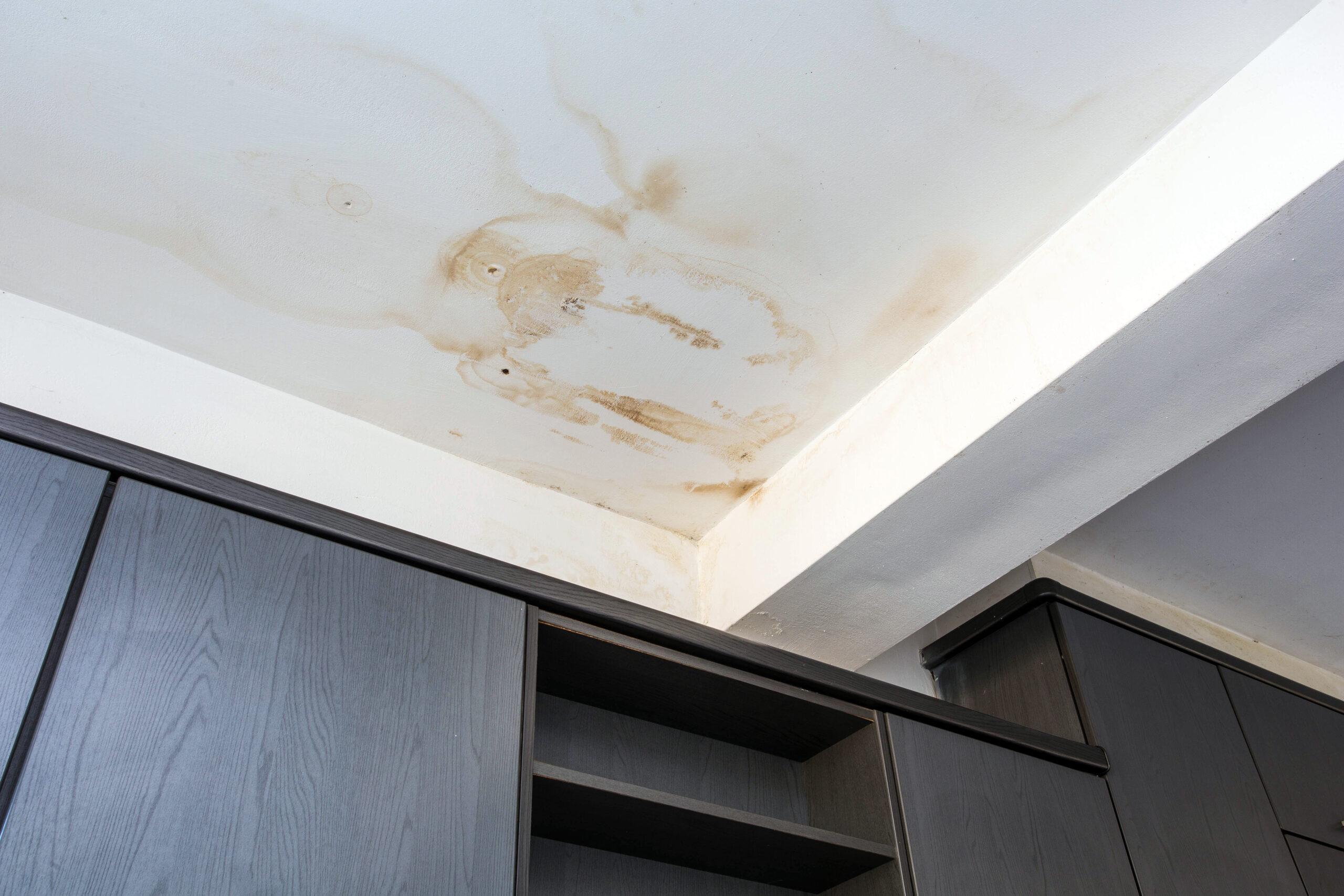At one of our recent home inspections in Fort Worth, the buyer asked if a stain on the ceiling in the garage was a concern.
The short answer is … maybe, or maybe not.

Ceiling stains commonly occur when something above leaks. This could be the roof, the HVAC, plumbing, tubs and showers (especially old or damaged caulk or deteriorating shower pans). It’s not uncommon for the exact source of the leak to occur somewhere than directly over the stain, since water from any source above can leak onto a rafter or pipe and travel along it for some short distance before dripping onto your ceiling and causing the stain.
It’s important as soon as you see a stain appearing on your ceiling, that you find the source of the leak and repair it. Otherwise, the water will keep dripping, which could actually cause your ceiling to collapse.
Then, once the area is dry, you can treat it to prevent mold, prime and paint. In most cases, areas with leaks that have been fixed and stains that have been treated and painted will not even be visible (unless the leak occurs again). In some cases, a homeowner will DIY the painting of the stained area, and forget to use a primer to seal the surface first, which can result in the discoloration slowly showing through the new coat of paint, which can cause a more persistent stain, yet as long as the leak has been fully repaired, the discoloration likely should not be a concern.
For the most effective repair, the area of the ceiling that was wet will be completely removed, replaced with new drywall, and then primed and painted. Anytime there is water in your home, mold is a concern, and this is the best method to insure that no mold is growing or present. In this case, you likely will not see evidence of damage either – if the person doing the repairs was precise with their repair.
It’s also possible that homeowners fixed the source of the leak, but have not yet repaired the ceiling. In these cases, the visible stain likely shouldn’t be a concern. During your home inspection, if we see a stain, we will inspect further to see if we find an active leak, or can find evidence of a leak repair, and will note that in your report.
We have several methods to check for active leaks when performing a home inspection. If the home has been vacant for a time and the leak was from a pipe or the HVAC unit that have not been used in some time, it’s possible that the source of the leak is not active and the area may have dried. Our licensed home inspectors are taught what to look for and always note their findings.
If we find evidence of a current leak, including dampness in the ceiling or elsewhere, or moisture anywhere during our inspection, we will note this on your home inspection report as well, so that you can consider those repairs during your home contract negotiation.
For commercial property inspections in the Dallas/Fort Worth area, including a thorough and informative home inspection report, learn more at
or request a quote for a commercial inspection at
682-351-2267



